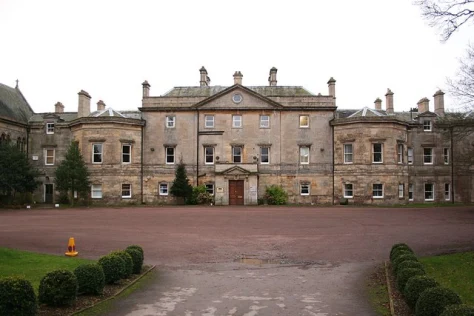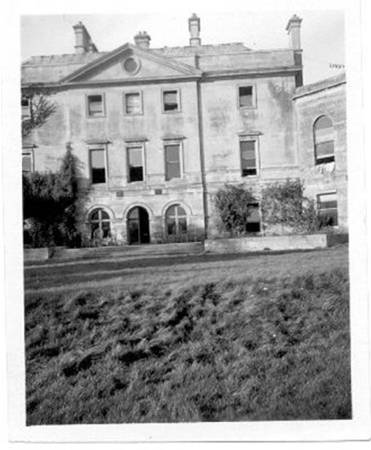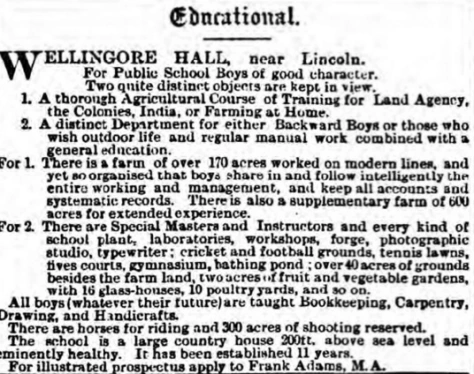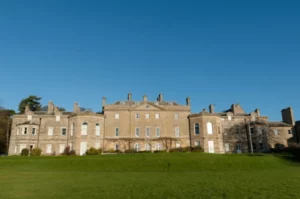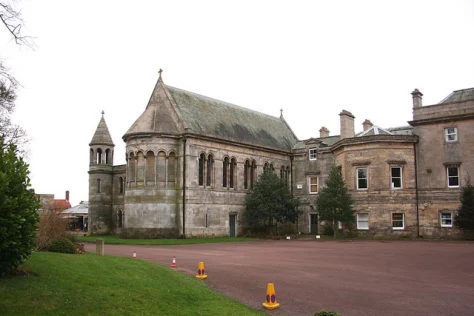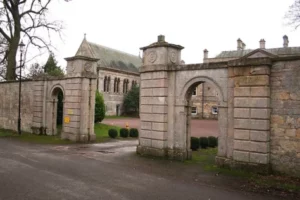Introduction
Wellingore Hall, a distinguished Grade II listed building in Lincolnshire, stands as a remarkable testament to 18th-century English architecture and aristocratic heritage. Built in 1760, this historic estate has undergone significant transformations over the centuries, serving as a family residence, agricultural college, wartime headquarters, and now a business centre. This article delves into the fascinating history, architectural features, and key events that have shaped Wellingore Hall.
Architectural Significance and Construction
Wellingore Hall was constructed in 1760 by Christopher Nevile, a Colonel of the South Battalion of the Lincolnshire Militia. The building is an exquisite example of limestone ashlar construction with slate roofs. Notable architectural features include ashlar-moulded stacks, a plinth, a first-floor band, and a moulded cornice with a coped parapet. The central block features a five-bay, three-story design, incorporating a basement, piano nobile, and mezzanine floors. A defining characteristic is the slightly projecting central three bays crowned with a pediment.
The Gates and Perimeter Wall
The gates, gate piers, and perimeter wall of Wellingore Hall are separately listed structures. Dating from around 1770 and later additions in 1830, these elements are constructed from limestone rubble and ashlar, enhancing the grandeur of the estate.
1898 newspaper advertisement for Wellingore Agricultural College (British Newspaper Archive)
The Nevile Family Legacy
Christopher Nevile: The Founder
Christopher Nevile (1743-1829) was a descendant of a powerful English baronial lineage. His decision to build Wellingore Hall led to the family’s relocation from their ancestral home at Auborn House to Wellingore.
Christopher Henry Nevile Noel’s Expansion
His son, Colonel Christopher Henry Nevile Noel (1774-1838), inherited the estate. Following the death of Hon. Thomas Noel of Walcot and his mother, Lady Sophia Noel, he incorporated the name Noel into the family title. He was a Lieutenant Colonel of the Rutland Fencibles and undertook lateral extensions to the hall around 1800.
Wellingore Hall (Sarah Riley Photography)
Henry Nevile: The Tragic Journey
Henry Nevile (1808-1861), nephew of Christopher Henry Nevile Noel, inherited Wellingore Hall. Educated at Harrow, he served as a magistrate, Deputy Lieutenant for Northampton and Lincoln, and an officer in the Dragoon Guards. In 1861, during a journey back from Italy, Henry fell ill in Paris and succumbed to rheumatism of the heart.
Ralph Henry Christopher Nevile’s Contributions
Ralph Henry Christopher Nevile (1850-1911) became the new heir. Educated at Eton and King’s College, he was a justice of the peace, High Sheriff of Lincolnshire (1883), and an innovator in early electrical devices. In 1876, he commissioned Scottish architect John MacVicar Anderson to remodel the hall. In 1882, he built a Roman Catholic chapel dedicated to St Augustine, which was tragically destroyed by fire in 1884 but later rebuilt in 1885.
Roman Catholic Church of St Augustine, Wellingore Hall (Geograph)
Wellingore Agricultural College: An Educational Era
Between 1891 and 1899, Wellingore Hall was temporarily repurposed as an agricultural college under the supervision of Frank Gray, M.A. The college, which housed approximately 30 boys, embraced a liberal approach to education, permitting activities such as horseback riding and dog keeping. One notable student was Philip Henry George Gosse, son of Sir Edmund William Gosse, who later became a renowned naturalist and physician.
20th-Century Changes and War Years
Geoffrey Henry Nevile’s Agricultural Innovations
Geoffrey Henry Nevile (1874-1935) assumed control of the estate, dedicating his life to agriculture. He pioneered mechanised farming and engaged in government agricultural projects in Canada, Sudan, and Egypt. His brothers, Hugh George and Bernard Philip, were both casualties of World War I, leaving Charles Joseph Nevile to share the family responsibilities.
Charles Joseph Nevile’s Public Service
Charles Joseph Nevile, married to Muriel O’Connor, served in Sudan’s civil service as an assistant commissioner of Dongola Province. A keen cricketer, he captained the Lincolnshire cricket team before passing away at Wellingore Hall in 1929.
World War II and Its Impact
The outbreak of World War II brought dramatic changes to Wellingore Hall. The estate was requisitioned by the military, initially serving as a mess for RAF Wellingore and later transforming into a prisoner-of-war interrogation centre. Notable wartime figures such as Douglas Bader and Guy Gibson were stationed at Wellingore Hall. Unfortunately, the war years took a toll on the estate, with reports of cigarette burns and general neglect scarring its historic interiors.
Post-War Decline and Restoration
The End of the Nevile Family’s Era
Following World War II, the Nevile family permanently vacated Wellingore Hall, returning to Auborn House. In 1946, Kesteven County Council proposed purchasing the estate for use as a farm institute. Despite opposition from the Nevile family, a compulsory purchase order was threatened, and by 1947, the estate was repurposed for agricultural education.
The Sale and Modern Transformation
The hall and surrounding estate remained in institutional use until the late 1960s. In 1968, the Nevile estate was finally sold, and the building avoided demolition, unlike many historic properties of its time. Today, Wellingore Hall functions as a business centre, housing offices and apartments, ensuring the preservation of its historic legacy.
The gates to Wellingore Hall (Geograph)
Conclusion
Wellingore Hall’s storied past reflects the evolution of English country estates from aristocratic residences to modern-day functional spaces. Its architectural splendor, association with notable historical figures, and adaptation to changing societal needs make it a significant landmark in Lincolnshire. Despite the trials of war and periods of neglect, the estate has survived and continues to serve a new purpose while maintaining its historic essence.
- Sheffield United vs Sunderland LIVE: Championship play-off final result, match stream and latest updates toda - June 5, 2025
- Tulsi Gabbard Net Worth - June 5, 2025
- Explore New Mexico’s THC Infused Beverages - June 5, 2025

